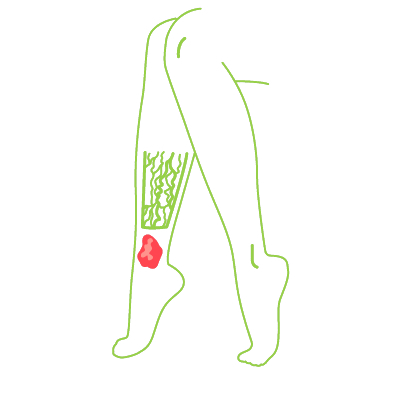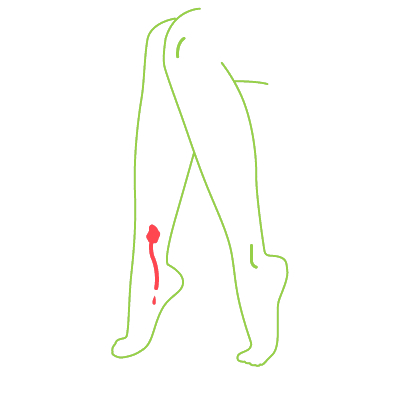Varicose Veins diseases
“Varix" comes from the Latin word varix, which means knots. Varicose veins are enlarged veins that appear to form flat (single or branched) paths as well as knots that are easily seen or felt under the skin. The following types can be distinguished:

Telangiectasia (Spider Veins)
They are small superficial veins (the size of a pin) that draw a branched path of bright red or violet color in the skin when dilated. They generally appear due to genetic factors, conditions that alter hormone levels (such as pregnancy, the use of oral contraceptives, or menopause), sudden trauma, or leading a sedentary life.

Perforating Veins
They connect the superficial venous system with the deep venous system; if your valves fail to function, they can cause a lot of problems. This insufficiency is often difficult to detect and it is the main cause of varicose ulcers. To diagnose perforating veins the use of ultrasound is required.

Varicose Ulcers
This is the most common complication and it occurs in the most advanced stage of varicose veins. It is usually found at the level of the ankles and it is caused by the weakness of the venous wall and prolonged inflammation. Before its appearance, the skin can become dark, pale, and/or stiff. Subsequently, the ulcer causes loss of skin in the affected area and humidity.

Bleeding Varices
It is a serious complication caused by a hemorrhage or rupture of a varicose vein, which affects people who have had varicose veins for many years. It occurs when the wall of the varicose vein is thin and close to the skin, especially in the lower third of the legs. The bleeding can be spontaneous or caused by a blow or cut in the wall of the vein.
Reticular veins
They are dilated veins under the skin. They are larger and less superficial than telangiectasias, which are usually green and blue in color. Initially, they are flat veins, but since blood does not circulate, they gradually bulge, increasing their relief.
Truncal Veins
They consist of abnormal dilation (greater than 4 mm) of the saphenous vein, one of the main veins of the legs, and/or its branches. They are usually green, blue, or purple. Sometimes they can be easily felt.
Venous Thrombosis
It occurs when a blood clot (thrombus) develops in one or more deep veins of the body, usually in the leg area. If the clot advances inflammation of a vein near the skin, you have a condition known as superficial thrombophlebitis.
This occurs spontaneously and it can be common in people that take a long time to heal, although it can also occur in sedentary people.



